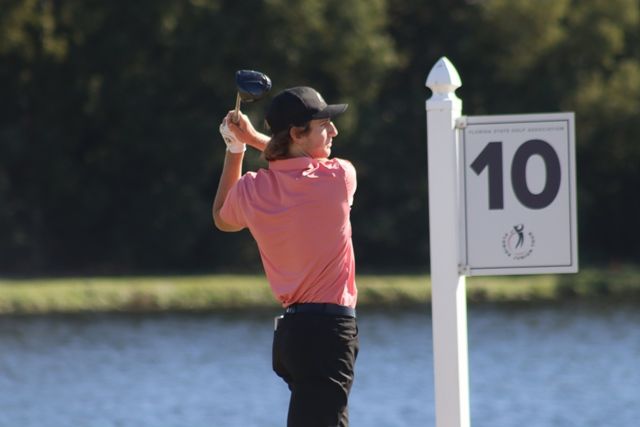Written by: Darin Green, Senior Director of Rules & Competitions

Player A’s tee shot found the fairway over 250 yards from the tee. Player B also hit his tee shot over 250 yards in the same direction. Player B walked to a ball in the fairway and thinking it was his ball, played that towards the hole and took a large divot. Shortly thereafter, the players realized that Player B played Player’s A. Player B added a two-stroke penalty for playing a wrong ball and found his original ball and played out the hole. The stroke Player B made at Player A’s ball does not count, but he did earn a two-stroke penalty. See Rule 14.7
Remember, if you are unable to identify your ball by looking at it, you are always permitted to mark and lift a ball for identification purposes. When a ball is lifted for identification do not clean it; however, you are permitted to clean it a little if needed for identification.
Player A wasn’t certain what to do, so he dropped his ball within one club-length of the divot that Player B made when he played A’s ball, and completed the hole. The players then informed the Committee of their actions.
The Committee discussed their actions and agreed that Player A put his ball in play improperly. When Player A’s tee shot came to rest in the fairway the ball had a spot on the course and a lie. Player B then moved, and altered the lie (taking a divot), of Player A’s ball. (See Rules 6.3c(2) and 14.2d) When a lie is altered, not in sand, the player must place a ball in the spot that is the nearest most similar lie within one club-length, not nearer the hole. Since Player A dropped the ball rather than placing it in the nearest most similar that he original had, he played from a wrong place and incurred a two-stroke penalty. The stroke he made counts and must not correct the error (must play the ball as it lies).
If a ball’s lie is altered in sand (bunker, waste area, etc.) either through searching or an outside influence, the player must replace and recreate the lie.
Tip – Always put identifying marks on your golf ball and develop your own unique way to mark it. Having your golf balls marked in several locations makes it easy for you to identify it and helps prevent others from playing your ball.





